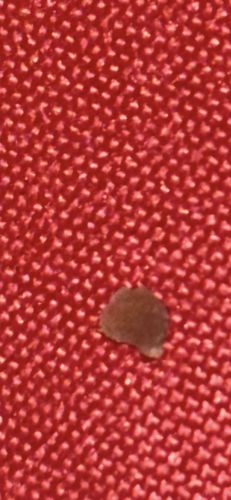Carpet Beetle (Larva)
Scientific Name: Likely Dermestes lardarius (Larder Beetle), Anthrenus verbasci (Varied Carpet Beetle), or a related species within Dermestidae.
Order & Family: Order: Coleoptera, Family: Dermestidae
Size: Larvae typically range from 2-5 mm in length, depending on the species and developmental stage. They are often covered in bristles, giving them a bristly or hairy appearance.

Natural Habitat
Indoors, larvae are found in carpets, rugs, upholstered furniture, closets, attics, museums, and anywhere animal-based products are stored. Outdoors, adult beetles are found on flowering plants.
Diet & Feeding
Larvae primarily feed on natural fibers such as wool, silk, fur, felt, feathers, and leather. They also consume pet hair, lint, and dried animal products like dead insects or taxidermy. Adults feed on pollen and nectar.
Behavior Patterns
Carpet beetle larvae are typically found in dark, undisturbed areas where their food sources are abundant. They are slow-moving and tend to curl up or play dead when disturbed. They undergo complete metamorphosis, with larvae molting multiple times before pupating. The adult beetles are often attracted to light and may be found near windows indoors.
Risks & Benefits
Risks: Carpet beetle larvae can cause significant damage to household items and museum collections made of animal products, leading to costly repairs or loss of irreplaceable items. They do not bite humans, but some individuals may develop allergic reactions or skin irritations from hairs shed by the larvae. Benefits: In nature, they play a role as decomposers by feeding on animal carcasses.
Identified on: 9/1/2025